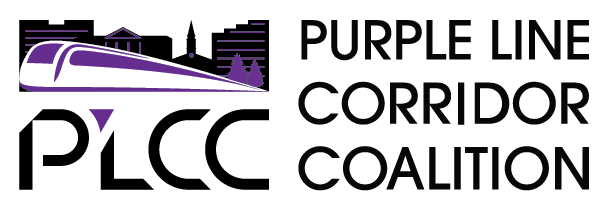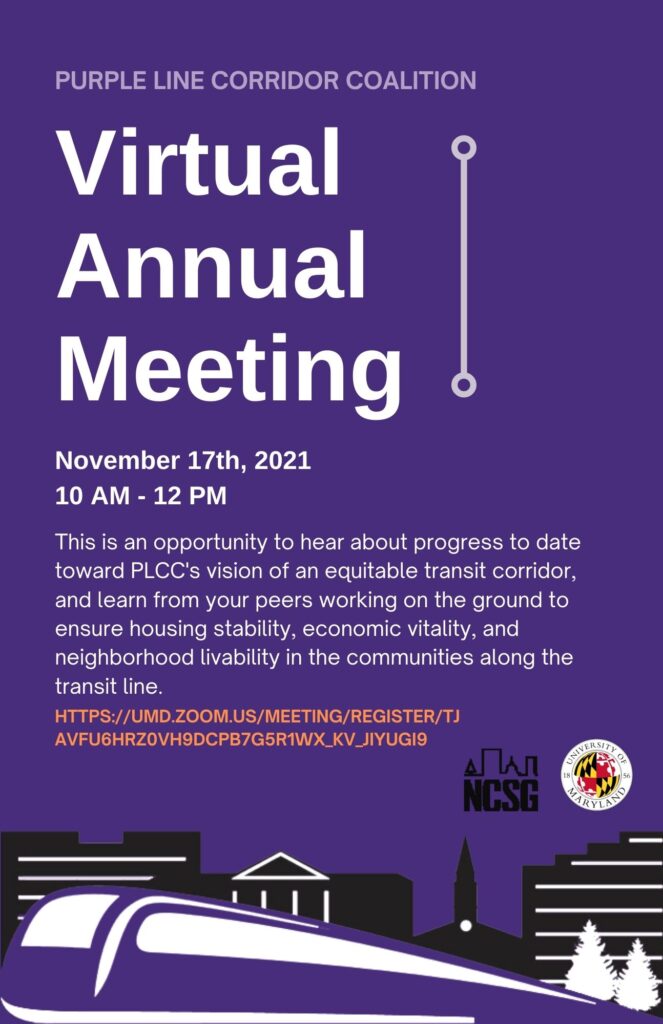PLCC Long-Term Workforce Strategy
The Purple Line Corridor Coalition has long held the goal of creating a corridor where workers are well-trained, grow in number, and are well-matched with employers in skills and location. Yet, there is a sizable gap between the realities and prospects of the corridor’s current labor force and the long-term aspirations for the workforce. To gain traction in bridging the gap, the coalition must work with other key stakeholders to ensure a corridor-wide, inclusive, and equitable workforce recovery as the metropolitan region emerges from the depths of the public health pandemic.
To craft the right set of strategies, we must factor in national, regional, and local trends and context. Nationally, we know that 44% of workers are in low-wage jobs with annual median wages of about $18,000. Over the last four decades, middle-skill jobs and middle-skill pay has grown minimally, and for low-wage jobs even less. Black and Latino workers have born the brunt of these economic dynamics, as they are overrepresented in industries not covered by standard labor laws, meaning far less access to basic benefits and protections.
The pandemic has presented the nation and the region with a new set of challenges, exacerbating the underlying dynamics. We know, as well, that new technologies like AI, robotics, and automation will make a lot of low-skill and even middle-skill jobs obsolete before the end of this decade.
Although our Washington D.C. region serves an economic engine and one of the most dynamic regional economies globally, the Brookings Institution found in 2021 that of the 53 very large metro areas with populations over 1 million, the Greater DC region ranks 37th out of 53 in geographic inclusion and 51st out of 53 in racial inclusion. Low wage workers in the D.C. region are mostly found on the eastern side of the region, particularly in southeast Washington, the inner ring suburbs of Prince George’s and parts of southwestern Montgomery County.
Despite the Purple Line corridor serving as an important economic engine for Maryland, the income disparities along the corridor are also significant. For example, 55% of residents in the Riverdale-New Carrollton residents sub-area have a high school diploma or less, as do 57% in the International Corridor sub-area.[i] This percentage is far higher than the national percentage, which is about 39%[ii] and results in too many residents restricted to low-wage and low-skill jobs.
The Coalition has developed a long-term strategic framework for workforce development in the corridor that focuses in three broad areas, with racial equity as central to all three:
- Advancing a Robust Workforce Advocacy Agenda (state & local)
- Promoting Workforce Programs Well Aligned with Growing Industries and Occupations (e.g., digital skills, sustainable career pathways, apprenticeships, skills-based hiring, entrepreneurship programs)
- Bolstering Workforce Development Support Systems and Infrastructure in the Corridor (robust wraparound supports, adult literacy and ESL programs, access to high-speed broadband, and bringing jobs centers to where people live)
For 2022-2023, the Coalition has committed to focusing in five action areas and pursuing study in five others, again with racial equity central to all action areas.
The action areas are:
- Expand outreach and promotion of corridor workforce services and opportunities (mainly through the work of key partners & stakeholders)
- Activate far more immigrants into workforce services (again, mainly through coordination and partnerships with stakeholders)
- Pursue a 2022 advocacy agenda to increase funding and investments in corridor workforce activities at the state and local levels
- Ensure new mobile job centers in each county regularly visit equity corridor locations
- Reengage the Maryland Transit Administration and the Purple Line Transit Partners to increase county- and corridor-based construction hires for the construction period 2022-2026.
Study areas include:
- Effective ways to engage corridor employers to build better jobs pipelines for residents
- How to bridge digital inequities in the corridor
- How to expand apprenticeships for adults and for high school students
- How to train and support new, corridor-based entrepreneurs
- How to support increases in wrap around service

[i] 2015-2019 Census/American Community Survey 5-year estimates and 2019 Longitudinal Employer–Household Dynamics.
[ii] “Educational Attainment in the United States,” Wikipedia, https://en.wikipedia.org/wiki/Educational_attainment_in_the_United_States#:~:text=General%20attainment%20of%20degrees%2Fdiplomas,-Educational%20attainment%20in&text=In%202018%2C%20nearly%209%2F10,at%20least%20a%20bachelor’s%20degree.

